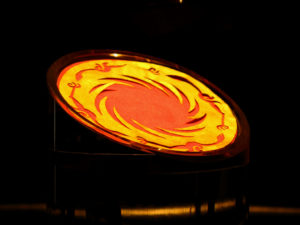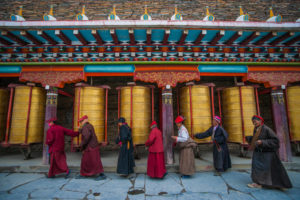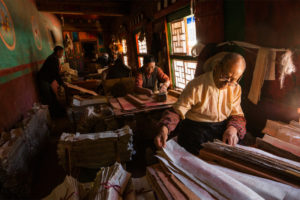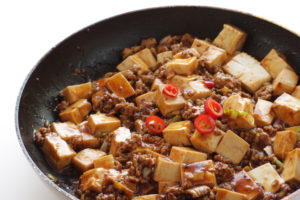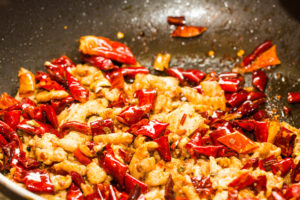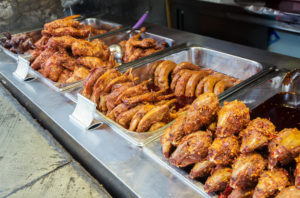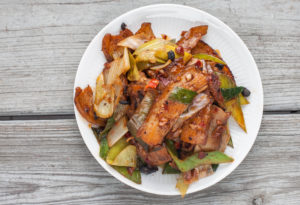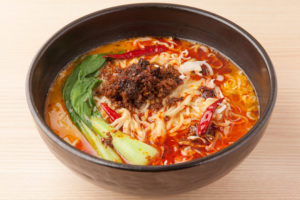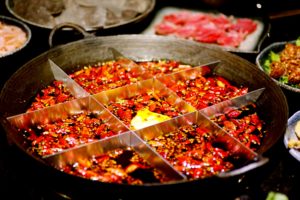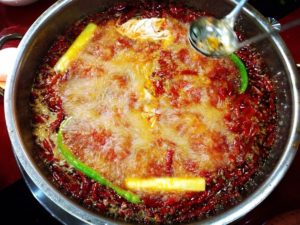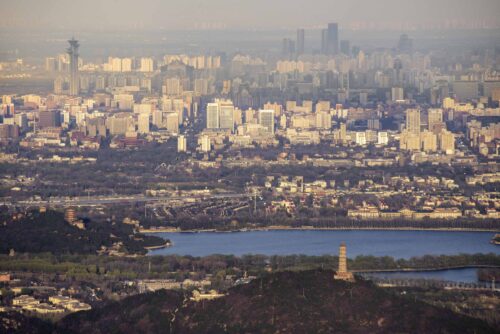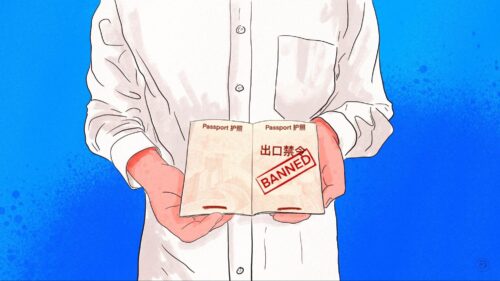The China Project Chengdu Directory
A brief guide to the sights, sounds, and tastes of China’s panda capital.
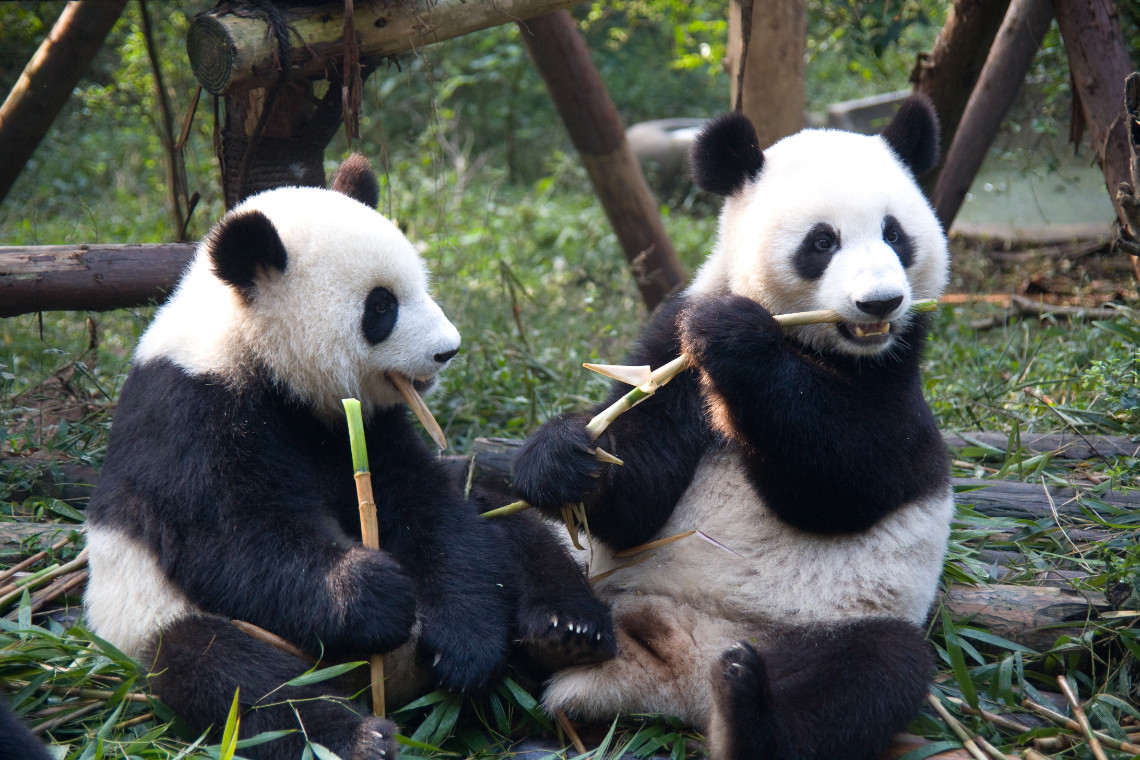
The laid-back city of Chengdu is a major draw for tourism in China’s southwest, largely for three reasons: great food, gorgeous scenery, and pandas. Both the tongue-tingling food of Chengdu’s province, Sichuan (previously spelled “Szechwan”), and the pandas of Chengdu’s central wildlife reserve are world famous. Less known internationally, but familiar to most Chinese, are Sichuan’s amazing sights and easygoing lifestyle. Sichuan shares a border with Yunnan Province, another location recognized as an escape from coastal China’s frenetic pace of life, and within Sichuan lie some of the world’s most famous Buddhist sites, large Tibetan areas, locations of key historical events, and some of the most beautiful natural areas in all of China.

Quick facts
- Chengdu is the capital of Sichuan Province, the fourth-most-populous province in China.
- Though you may know that province by the name “Szechwan,” the official spelling was changed to “Sichuan” in 1958. The difference is between the old Wade-Giles transliteration of the 19th century, which first gave English speakers a way to pronounce Chinese, and the pinyin system of the 20th and 21st centuries, which was adopted as the standard in mainland China.
- Chengdu population: 14 million.
- GDP/capita: $12,000 (Shanghai comparison: $17,000).
- People in Chengdu speak in a local dialect, which you can listen to here. It is part of the Sichuanese dialect that over 100 million people speak. You can watch a YouTube video (in Chinese) that illustrates, humorously, how Sichuanese can sound similar to Mandarin, yet still the dialects are in many cases mutually unintelligible.
Places to see in and around Chengdu
Within Chengdu itself, the site that receives the most attention is the Chengdu Research Base of Giant Panda Breeding. Established in 1987, the base started with six sick and starving giant pandas rescued from the wild, and it has now become a home for 172 newborn pandas. The center serves as more than merely a tourist attraction, since it has developed itself into the world’s biggest artificial breeding population of captive giant pandas at the present with 113 existing ones through efforts of more than 20 years. When pandas are given to other countries by China as a gesture of goodwill, they return here after a few years abroad.
Another popular place to visit in Chengdu is the Jinsha Site Museum. Located about 50 kilometers from the Sanxingdui archeological site, the Jinsha site was discovered by accident in 2001 when construction workers discovered a large collection of buried metal and stone artifacts. The site stretches over 300,000 square meters and is believed to be the capital of the ancient Shu Kingdom, as well as one of the world’s oldest centers of civilization along the Yangtze River. To better preserve, study, and display the archaeological findings of the site, the Jinsha Site Museum was built and opened to the public in 2006 to showcase a great variety of ivory goods, gold articles, and stone statues.
Du Fu’s Thatched Cottage lies at the western outskirts of the city. It is the former home of one of the most prominent Chinese ancient poets, Du Fu. He is supposed to have written 240 poems during the four years he lived there. The cottage is set inside a pleasant park.
There are plenty of places to visit in the countryside side near Chengdu. Jiuzhaigou, literally meaning “Nine Village Valley,” takes it name from nine Tibetan villages scattered along its length. The valley is part of the Min Mountains on the edge of the Tibetan Plateau and covers a total area of 72,000 hectares full of magically colorful lakes, waterfalls, and mountains. In 1992, the Jiuzhai Valley National Park was inscribed by UNESCO as a World Heritage Site.
Sitting at the western rim of the Sichuan Basin, Mount Emei is one of the Four Sacred Buddhist Mountains of China and is a UNESCO World Heritage Site as well. The area also contains the Leshan Giant Buddha, the tallest pre-modern statue in the world. Another major attraction surrounding Chengdu is Tibet, an autonomous area of China and the highest region on earth. Chengdu, as a transportation hub in southwest China, offers over 30 direct flights to Lhasa, the capital of Tibet, on a daily basis and trains connecting these two cities. Many Tibetan villages can be found within Sichuan Province itself—accessible when border controls on the Tibet Autonomous Region are strict, as happens frequently.
Food
While the wonders of Chengdu and Sichuan are plentiful, the food alone is worth the trip. Sichuanese food is famous worldwide, though the real deal is often in a different universe from what you may find at your local “Szechwan” restaurant if you live in the U.S.
Why is it so different? A primary reason is the use of ma-la (麻辣 málà), a particular combination of hot-and-numbing flavors not found in any Western cuisine, and almost universally eschewed in westernized Chinese restaurants. It’s the combination of two ingredients, one commonplace — hot chili peppers (辣椒 làjiāo) — and one that is less famous, sometimes called a Sichuan peppercorn, known in Chinese as huajiao (花椒 huājiāo). The chili peppers provide the heat (辣 là), while the peppercorns provide an unforgettable tingly sensation (麻 má) that cuts and complements spicy cuisine perfectly. The numbing sensation is literally just that — physically numbing — as Sichuan peppercorn contain small amounts of a mild anesthetic molecule called hydroxy-alpha-sanshool.
Not all Sichuanese food is spicy, however. In fact, traditionally Sichuan people only ate spicy dishes for about a third of their meals. Nowadays, the proportion is higher, but achieving a balance between spicy and the multitude of other fragrant flavors of the region is still desirable. Signature dishes in Sichuan cuisine include:
- Mapo Doufu (麻婆豆腐 Mápó dòufǔ) — soft tofu with chili sauce. The dish originated in the Qing dynasty (AD 1644–1911) and was named after its inventor, an old lady with porkmarks on her face (Ma stands for porkmark, and po stands for old lady.) Authentic Mapo Doufu should come with both conventional “heat” spiciness and numbing flavor that is usually missing when the dish is adapted to non-Sichuanese tastes.
- Kung Pao chicken (宫保鸡丁Gōngbăo Jīdīng) — stir-fried chicken with peanuts, vegetables, and chili peppers.
- Mala Tutou (麻辣兔头 Málà Tùtóu) — spicy rabbit head. Though Westerners usually avoid eating animal parts like this, Sichuan people love this dish to the core. Spicy bunny brains are probably the favorite street food enjoyed by locals. Among roughly 500 million rabbit heads consumed by China per year, around 300 million of them are eaten in Sichuan.
- Double-cooked pork (回锅肉 Huí guō ròu) — boiled-and-then-stir-fried pork with cabbage.
- Dan dan noodles (担担面 Dàn dɑn miàn) — noodles cooked with chili sauce, minced pork, and ya cai (芽菜 yácài). The name refers to a carrying pole, which in Mandarin reads biandan (扁担 biǎndan). Street vendors in the past used to carry a pole over their shoulders with two baskets, one for noodles and one for sauce, at two ends of the pole.
- Sichuan hotpot (四川火锅 Sìchuān Huǒguō) — a cook-it-yourself soup in a spicy, numbing, and oily soup base. One of the most popular dishes, a common choice for a social meal with friends or family.
The culture of Chengdu
Recognized as one of the most laid-back cities in China, Chengdu takes one thing very seriously — Majiang (麻将 májiàng), or better known as Mahjong. Day in and day out, tea houses across the city hold locals playing this tile-based game while sipping tea. Very often, small-scale gambling is involved. In terms of rules, Sichuan-style Mahjong is slightly different from other variations of the game, as it doesn’t include winds, dragons, flowers, or seasons. It is widely considered to be the simplest version of Mahjong and is friendly to beginners.

A more formal cultural treasure of Chengdu is Sichuanese opera. With a long history that can be traced back to around 1700, Sichuanese opera perfectly blends local dialect with folk music, dance, and many acrobatic tricks such as fire spitting. It is best known for the stunning face changes, called bianlian, (变脸 biànliǎn) that the performers undergo, as they switch masks in the blink of an eye to convey their character’s emotion. Read more about Sichuanese opera in the Shanghai Daily here.
One of the best ways to understand the look and feel of Chengdu, however, is to compare it with what is commonly called its brother city, Chongqing. The megacity of Chongqing was once part of Sichuan Province, until 1997, when it was sectioned off as one of only four directly controlled municipalities in China (the others are Beijing, Shanghai, and Tianjin).
Though Chengdu and Chongqing share similar culture, cuisines, and dialects, there are stark differences between them in many aspects if you dig deeper. A video produced by Bigcow Studio breaks it down well. In terms of topography, Chengdu is flat while Chongqing is known as “Mountain City,” where taking a bus can give you a sense of riding on a roller coaster. When it comes to people, some say Chengdu locals can give you a cold feeling if you are an outsider, whereas Chongqing locals are more enthusiastic and straightforward. Disparate personalities also influence the way that people from these two regions speak. Chengdu dialect tends to extend the syllable at the end of each sentence. Chongqing locals prefer to speak in short and powerful bursts.
Even for hotpot, perhaps the region’s most famous food, the two cities have developed their own traditions. Chongqing hotpot is heavily reliant on beef tallow, and the soup base is usually used many times over to make the taste grow mellower and mellower. In contrast, Chengdu hotpot is based on a one time use of vegetable oil.
More about Chengdu:
- The 2008 Sichuan earthquake struck just 50 miles to the northwest of Chengdu and left the entire province in chaos. It claimed 70,000 lives and left at least 4.8 million homeless, making it the worst natural disaster in the country since the 1976 Tangshan earthquake. To understand the level of personal destruction and sorrow, read New York Times reporter Edward Wong’s moving portraits of witnesses to the event, including “Quake victims in China rally from painful losses” and “In rubble, couple clung to each other, and to life.” The tragedy later became the subject of political protest, some led by the suppressed artist Ai Weiwei, who argued that the government had build “Tofu-dreg schools” (豆腐渣校舍 dòufuzhā xiàoshè) in the affected area, meaning shoddily constructed — yet still officially approved — buildings that were destined to easily crumble and amplify the impact of such a disaster.
- In addition to being known as the Panda Capital of China, Chengdu is sometimes known as the queer capital of China. The LGBT community is especially prominent in the city.
- The construction of the new railway between Chengdu and Lhasa is estimated to be feasibly completed by 2030. Under the overarching “One Belt, One Road” (OBOR) policy promoted by President Xi, the newly planned train ride serves to boost Tibet’s tourism economy and assist China’s attempts to quell independence movements in Tibet and secure the country’s borders to ensure market access to the outside.
- As many second-tier cities in China declare their ambitions to be regional financial centers, Chengdu has joined the race with its vision for the future — to become the financial hub of western China.
- Despite its incredible popularity around the world, Sichuan cuisine, according to some cooks and food enthusiasts in Chengdu, is facing a crisis of losing its tradition.

